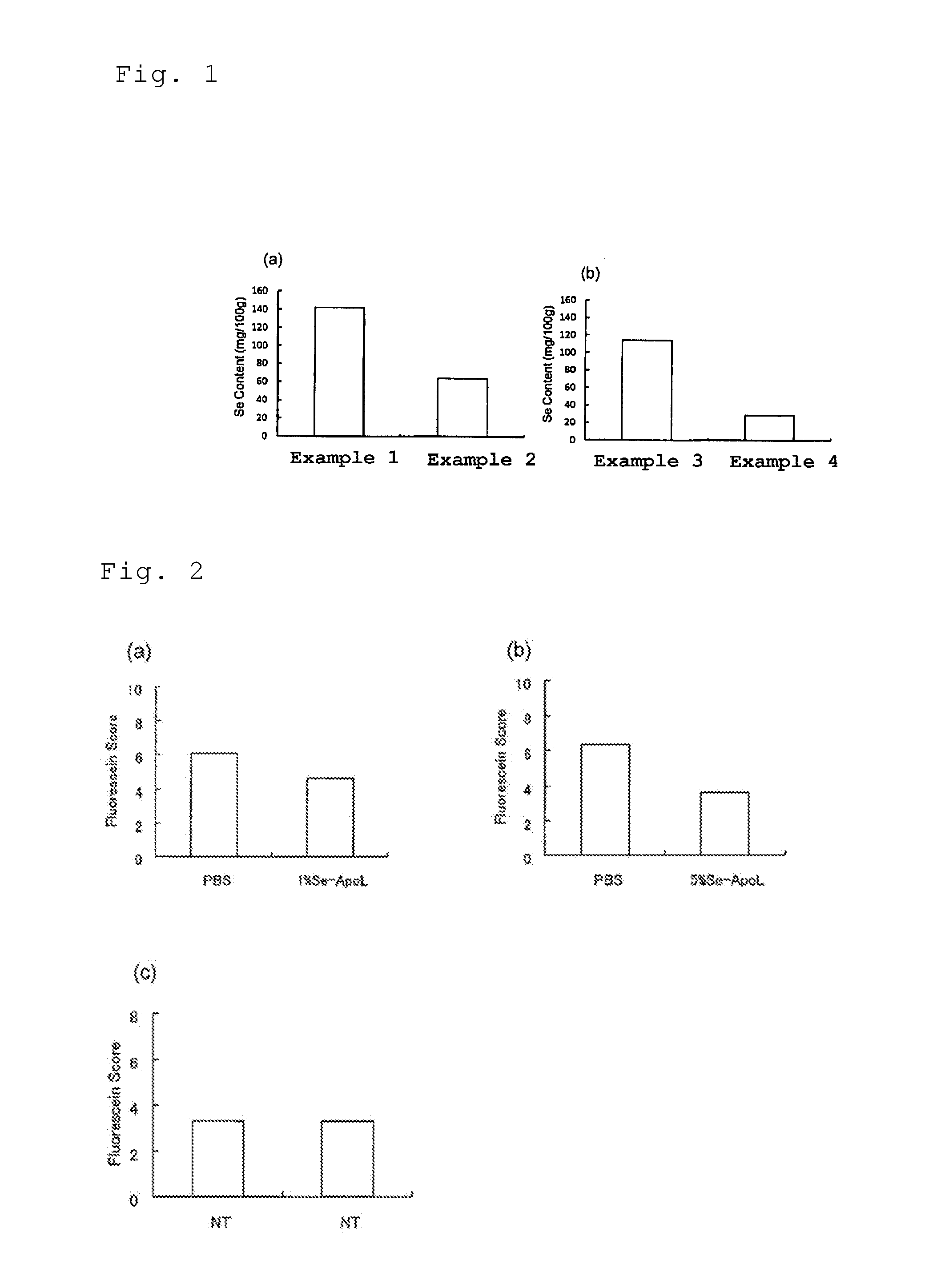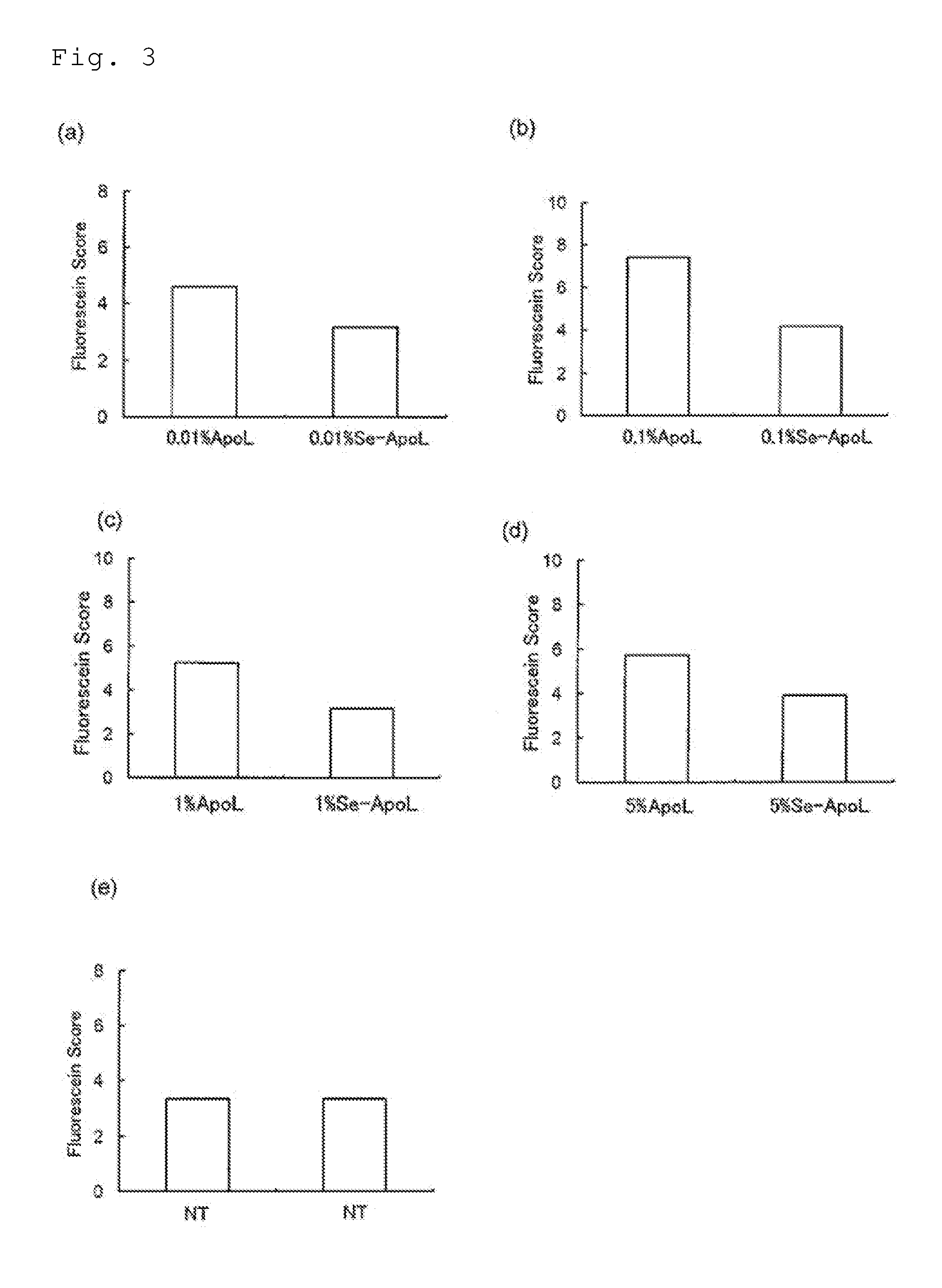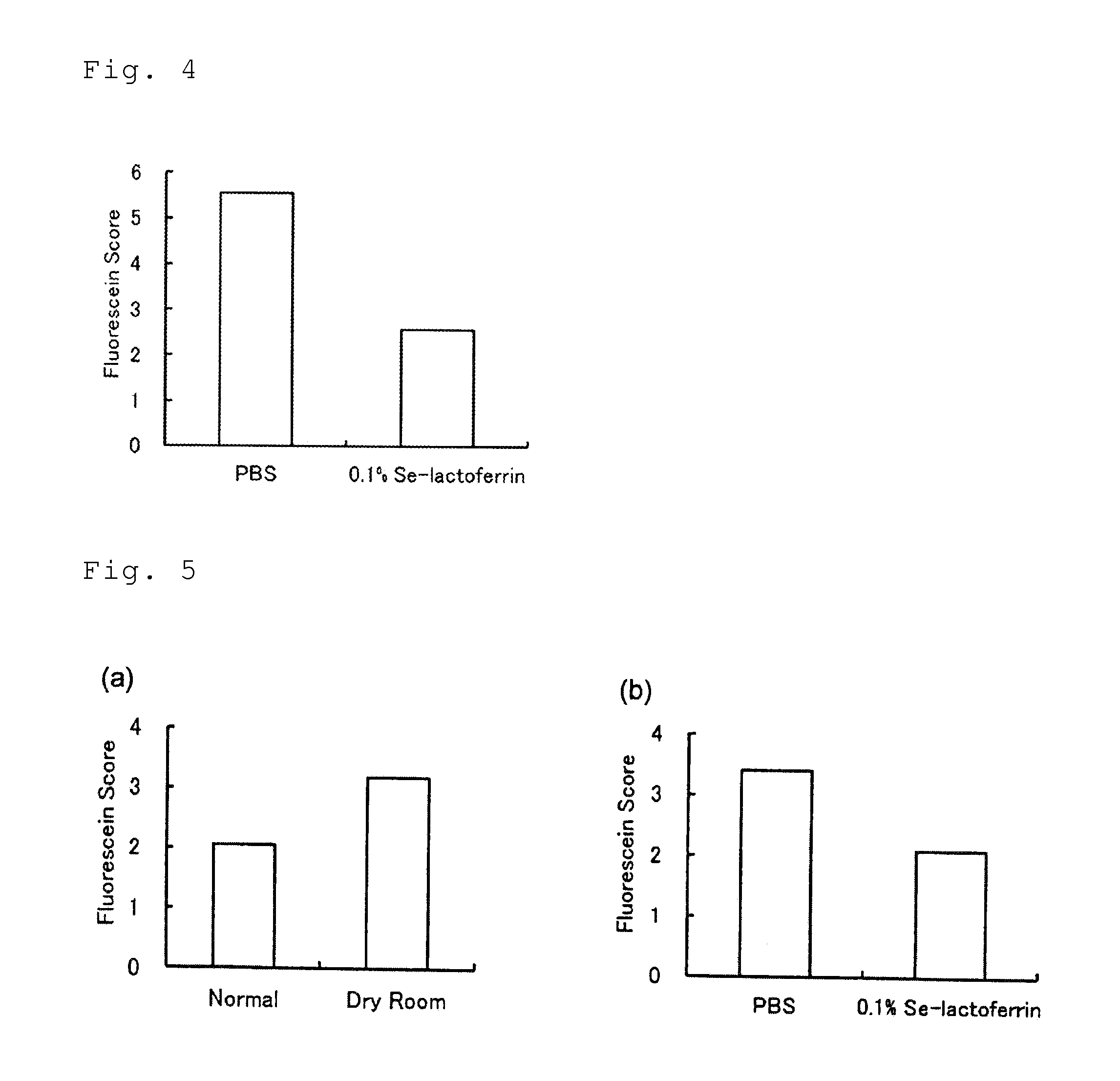Novel metalloprotein and process for producing same, and prophylactic or therapeutic agent for corneal and conjunctival diseases comprising said metalloprotein
a technology of metalloprotein and process, which is applied in the direction of peptide/protein ingredients, drug compositions, transferrins, etc., can solve the problems of serious effects on eyesight and barrier function, inability to use in the clinic, and inability to achieve the effect of improving vision, high therapeutic effect, and being easily available in large quantities
- Summary
- Abstract
- Description
- Claims
- Application Information
AI Technical Summary
Benefits of technology
Problems solved by technology
Method used
Image
Examples
example 1
Preparation of Selenium-Lactoferrin
[0068]After adding 1 g of apolactoferrin (product of Upwell Co., Ltd.) to an aqueous solution containing 5.4 mg of selenium(I) chloride (product of Wako Pure Chemical Industries, Ltd.), the liquid volume was adjusted to 10 mL, the aqueous solution pH was confirmed to be 3 or higher, and then a stirrer was used for stirring 240 times / min at 25° C. for a period of 30 minutes, to bind selenium to the apolactoferrin. Next, the mixed solution of selenium(I) chloride and apolactoferrin was transferred to a cellulose tube for dialysis (molecular cutoff: 12,000 to 14,000; product of As One Corp.), and 6 L of distilled water (≧17 MΩ) was used for dialysis at 4° C. for 48 hours while exchanging the distilled water every 12 hours, and the excess selenium not bound to apolactoferrin was removed. Following dialysis, freeze-drying was carried out using an FDU-12AS Freeze Dryer (product of As One Corp.).
example 2
[0069]The steps of Example 1 were repeated, except that lactoferrin (product of Tatua Japan) was used as the starting material.
example 3
[0070]The steps of Example 1 were repeated, but for this example the excess selenium was removed by the following procedure instead of dialysis. Specifically, for this example a UF membrane (Microza AP-0013(UF), molecular cutoff: 6,000, product of Asahi Kasei Corp.) was set in a pencil-type module benchtop filtration apparatus (Microza UF•M FPS-24001, product of Asahi Kasei Corp.). Also, the apparatus (operating pressure: 40 kPa as the module outlet pressure) was used for ultrafiltration of 10 mL of the mixed solution of selenium(I) chloride and apolactoferrin three times at room temperature (≧20° C.)
PUM
| Property | Measurement | Unit |
|---|---|---|
| Therapeutic | aaaaa | aaaaa |
Abstract
Description
Claims
Application Information
 Login to View More
Login to View More - R&D Engineer
- R&D Manager
- IP Professional
- Industry Leading Data Capabilities
- Powerful AI technology
- Patent DNA Extraction
Browse by: Latest US Patents, China's latest patents, Technical Efficacy Thesaurus, Application Domain, Technology Topic, Popular Technical Reports.
© 2024 PatSnap. All rights reserved.Legal|Privacy policy|Modern Slavery Act Transparency Statement|Sitemap|About US| Contact US: help@patsnap.com










